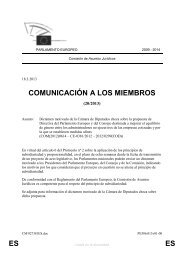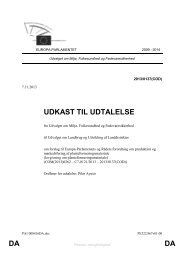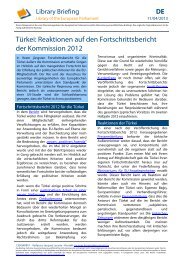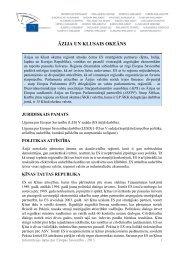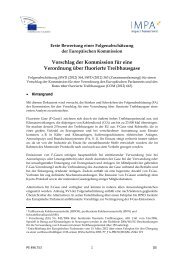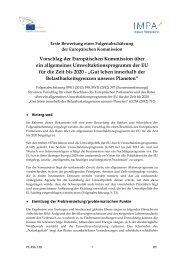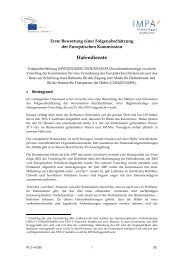Link to the study - European Parliament - Europa
Link to the study - European Parliament - Europa
Link to the study - European Parliament - Europa
Create successful ePaper yourself
Turn your PDF publications into a flip-book with our unique Google optimized e-Paper software.
Nuclear Decommissioning: Management of Costs and Risks<br />
____________________________________________________________________________________________<br />
exercise control over all those activities over <strong>the</strong> very long time that a decommissioning project lasts<br />
is <strong>the</strong> central task of project management.<br />
As can be seen from both figures, Figure 22 and Figure 23, adding selective project management<br />
methods <strong>to</strong> a project already running in a different mode does not make much sense, because most<br />
of <strong>the</strong> necessary data is missing, data is not available or not with <strong>the</strong> necessary reliability, interfering<br />
influences can be overseen because <strong>the</strong>y remain out of scope, etc.<br />
Project management requires continued feedback of experiences made during task performance. The<br />
rationale behind that reflux is that estimates made in <strong>the</strong> planning phase of tasks require validation.<br />
Validated estimates can be used in <strong>the</strong> planning of similar tasks, thus reducing risks and uncertainties.<br />
Such reflux of experiences is highly valuable knowledge for project management purposes.<br />
Figure 24: Control directions and reflux of experiences in EWN’s project management<br />
Source: (EWN 2013a)<br />
This entails a different role for <strong>the</strong> workforce in a project managed environment: <strong>the</strong> workforce not<br />
only has <strong>to</strong> feed back that <strong>the</strong> planned task is performed (main role in <strong>the</strong> operational phase) but<br />
gains an additional role in controlling ('Bot<strong>to</strong>m up control'), see Figure 24. Estimation from <strong>the</strong><br />
planning phase is confronted with calculated results from <strong>the</strong> implementation phase in order <strong>to</strong><br />
generate awareness of <strong>the</strong> original estimate’s reliability. Without <strong>the</strong>se corrections through<br />
experience project management would not be able <strong>to</strong> detect and correct errors.<br />
85




